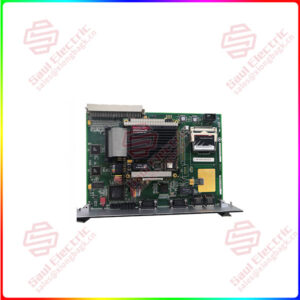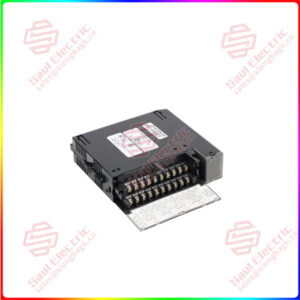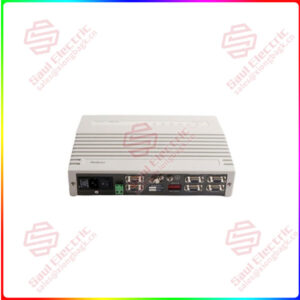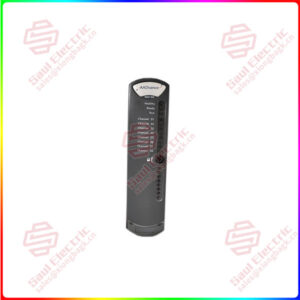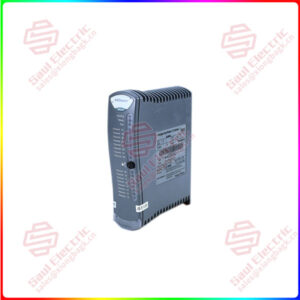Description
Overview
Essential details:IS200TSVOH1BCC SERVO TERMINAL BOARD
DESCRIPTION
Functional Description
IS200TSVOH1BCC is a Servo Terminal Board developed by GE. It is a part of Mark VI control system. The Servo Terminal Board (TSVO) serves as a crucial interface component within the system, facilitating the operation of electro-hydraulic servo valves responsible for actuating steam/fuel valves. By effectively interfacing with electro-hydraulic servo valves, facilitating valve position measurement, and providing robust communication and signal distribution capabilities, the Servo Terminal Board (TSVO) plays a vital role in ensuring the reliable and efficient operation of the steam/fuel valve control system. Its integration of Simplex and TMR signals, along with support for external trip inputs, further enhances system resilience and safety in demanding industrial environments.
Features
- Valve Actuation and Position Measurement: Interfaces directly with two electro-hydraulic servo valves, which play a pivotal role in controlling the operation of steam/fuel valves within the system. Additionally, valve position is measured using linear variable differential transformers (LVDT), ensuring precise control and monitoring of valve positions.
- Communication with I/O Processor (VSVO): Two cables connect to the I/O processor (VSVO), utilizing the J5 plug located on the front of VSVO and the J3/4 connectors on the VME rack. This communication pathway enables seamless data exchange and coordination between TSVO and the I/O processor, facilitating integrated system operation.
- Signal Distribution: Provides both Simplex and TMR (Triple Modular Redundancy) signals to ensure redundancy and fault tolerance in critical operations. Simplex signals are routed through the JR1 connector, while TMR signals are fanned out to the JR1, JS1, and JT1 connectors. This configuration enhances system reliability by providing redundant signal paths and fault detection capabilities.
- External Trip Capability: Plugs JD1 or JD2 on TSVO are designated for external trip inputs from the protection module. This feature allows for additional safety measures by enabling the system to respond to external trip signals, such as those triggered by emergency shutdown protocols or protective measures.

IS200TSVOH1B
Product parameter
Manufacturer: General Electric
Country of Manufacture: United States of America (USA)
Size: 17.8 cm high x 33.02 cm wide
Technology: Surface mount
Product Type: Servo Terminal Board
Availability: In Stock
Series: Mark VI
APPLICATION
LVDT Excitation Output
- Frequency Stability: The excitation output operates at a consistent frequency of 3.2 kHz, ensuring reliable performance across various operating conditions. With a tight tolerance of ±0.2 kHz, the excitation frequency remains within specified limits, minimizing deviations and ensuring consistent sensor operation.
- Voltage Output: The excitation output maintains a stable voltage level of 7.00 V rms, crucial for proper operation of LVDT sensors. With a narrow tolerance of ±0.14 V, the voltage output remains precisely regulated, minimizing fluctuations and ensuring accurate sensor readings. This precise voltage control is essential for achieving reliable and repeatable measurements.
- LVDT Sensor Compatibility: The excitation output is designed to interface seamlessly with LVDT sensors, providing the necessary voltage and frequency signals for optimal sensor performance. By delivering stable and accurate excitation signals, the output ensures consistent and reliable measurement of position or displacement, contributing to the overall accuracy and reliability of the system.
- Precision and Stability: Maintaining tight tolerances on both frequency and voltage output is crucial for ensuring the precision and stability of LVDT measurements. The precise control of excitation frequency and voltage minimizes variations in sensor response, resulting in accurate and repeatable measurements over time.
Pulse Rate Input
- Signal Dependency on Frequency: The minimum signal required for proper measurement varies depending on the frequency of the pulse rate input. At a lower frequency of 2 Hz, the minimum signal amplitude needed for accurate measurement is 33 mVpk. This ensures that even at lower frequencies, the system can reliably detect and measure pulse rate inputs.
- Frequency-Dependent Sensitivity: As the frequency of the pulse rate input increases to 12 kHz, the minimum required signal amplitude also increases to 827 mVpk. This sensitivity to frequency variations ensures that the system can accurately capture and process pulse rate inputs across a wide range of operational frequencies, maintaining precision and reliability under varying conditions.
- Ensuring Accuracy and Reliability: By specifying minimum signal requirements based on frequency, the Pulse Rate Input feature ensures accurate measurement and monitoring of pulse rates under diverse operating conditions. This sensitivity to signal amplitudes at different frequencies helps maintain measurement accuracy and reliability, enabling the system to effectively track pulse rate variations and respond accordingly.
- Adaptability to Operational Conditions: The varying minimum signal requirements cater to the dynamic nature of pulse rate inputs, allowing the system to adapt to changes in frequency and ensure consistent measurement performance across different operational scenarios. This adaptability enhances the versatility and robustness of the system, enabling it to effectively handle pulse rate monitoring tasks in a wide range of applications.
Fault Detection
- Comprehensive Fault Detection: The system incorporates a range of fault detection mechanisms to identify and address potential issues promptly. These mechanisms are designed to detect various fault conditions that could compromise system integrity or performance.
- Servo Current Out of Limits or Non-Responsive Behavior: One aspect of fault detection involves monitoring servo currents to ensure they remain within predefined limits. If the servo current exceeds these limits or exhibits non-responsive behavior, indicating a potential malfunction or abnormality, the system triggers a fault condition. This proactive monitoring helps prevent servo-related issues and ensures smooth operation of the system.
- Regulator Feedback Signal Exceeding Predefined Limits: Another critical aspect of fault detection involves monitoring regulator feedback signals to detect any deviations from predefined limits. If the feedback signal exceeds these limits, indicating a regulatory malfunction or abnormality, the system identifies this as a fault condition. By promptly detecting and addressing such deviations, the system maintains stable regulation and operational consistency.
- Detection of Failed ID Chip: Additionally, the system is equipped to detect the failure of ID chips associated with system components. These chips contain essential identification information, including serial numbers and revision numbers. If a failure in the ID chip is detected, indicating a potential communication or identification issue, the system flags this as a fault condition. This proactive detection helps prevent communication errors and ensures accurate identification of system components.
lf you need to inquire or purchase ,please send the product models to my email or call medirectly .
Same day shipment of 1000 parts
My company under the Sales and Marketing Department, technical engineering Department, after-sales service department, the department of comprehensive management. We can help your business with good service.
1. Sales Department 24/7 service. Handles your requests for any PLC DCS products in a timely manner with patience and professionalism.
2. The engineering department ensures that the products have no quality problems. All products will be inspected before shipping.
3. The financial department checks the payment and refund in time.
4. The warehouse department will carefully check the list of goods, carefully pack them, and deliver the goods in time.
5. After-sales Service Department has a full-time after-sales service team, subordinate to the sales department, and users can timely respond to service requests.

Shipping
Superiority products IS200TSVOH1BCC SERVO TERMINAL BOARD
| PFCL201CE ABB Pressure sensor controller | KJ2231X1-EA1 4-20 mA Series 2 Card EMERSON |
| MTL BPHM64 Eaton Safety grid base plate | 330106-0530-10-02-05 Proximity Probes Bently Nevada |
| 1794-IF4IXT Allen Bradley Flex I/O 1794 series input module | Max-4/11/03/032/99/1/1/00 SERVO MOTOR ELAU |
| 1734-IM4 Allen Bradley POINT I/O 4 Point Digital Input Module | 330104-00-08-90-02-05 Proximity Probes Bently Nevada |
| 1769-ECR Allen-Bradley Right end cover (ECR) module used together | D201139L Metso RT node PC AP31 D200137 personality module |
| 136188-02 Bently Nevada Ethernet /RS232 Modbus I/O module | D201376 Metso RT node PC AP31 D200137 personality module |
| AI02J ABB Analog input module | IS220PRTDH1A 336A4940CSP6 Resistance Temperature Device (RTD) Input Module GE |
| DSSA165 ABB Ac power module | IS220PSCAH1A 336A4940CSP9 Mark VI component GE |
| PXIe-1073 NI PXI Chassis | IS220PDIAH1BE 336A5026ADP4 Resistance Temperature Device (RTD) Input Module GE |
| F860-CA HONEYWELL Series C “fieldbus interface module | IS420ESWBH3AX GE Analog I/O modules |
| DSSA165 ABB Ac power module | 516TX 336A4940DNP516TX GE 516TX-A Industrial Ethernet Switch |
| 125840-02 Bently Power module | 128277-01 Future Expansion Faceplate Bently Nevada |
| 125680-01 BENTLY Displacement detection module | A413139 PC BOARD CIRCUIT BOARD MODULE ASSEMBLY METSO |
| 147663-01 BENTLY Communication analog output module | D201471 Metso RT node PC AP31 D200137 personality module |
| 125800-01 Bently Nevada Key phase input/output module | A413188 PC BOARD CIRCUIT BOARD MODULE ASSEMBLY METSO |
| 140471-01 Bently Nevada Developed I/O module with internal terminal | A413331 PC BOARD CIRCUIT BOARD MODULE ASSEMBLY METSO |
| 3500/22M 138607-01 Bently Detector module | D201466 Metso RT node PC AP31 D200137 personality module |
| 3500/94 145988-01 BENTLY Display module | 85UVF1A-1QD Fireye Integrated Flame Scanner with Internal Flame Relay |
| 3500/42M 176449-02 bently nevada Shaft vibration module | 516TX 336A4940DNP516TX GE A microprocessor device |
| 3500/92 136180-01 bently nevada Communication gateway module | 516TX-336A4940DNP516TX GE microcontroller |
| 136180-01 Bently Nevada Communication gateway module | 2MLR-CPUHT HONEYWELL CPU HT bus function |
| 3500/92-03-01-00 Bently Nevada 3500/92-03-01-00 | 177313-01-01 BENTLY NEVATA Vibration monitoring module |
| 7264 ABB The four-channel SSI interface module features automatic | PXIE-6556 NI Automatic industrial control module |
| MDB-8E SARTORIUS Load cell | PFCL201CE ABB Pressure sensor controller |
| 3500/15 127610-01 Bently Nevada Digital input module | MTL BPHM64 Eaton Safety grid base plate |


 1 Year Warranty
1 Year Warranty
